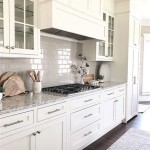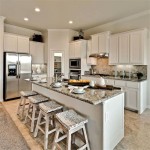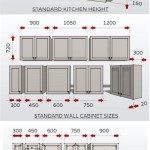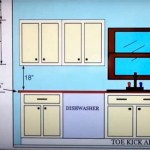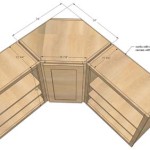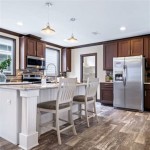Essential Aspects of Kitchen Cabinet Wall Fixings
Kitchen cabinets play a crucial role in the functionality and aesthetics of any kitchen. They provide storage space, organization, and visual appeal. Ensuring that these cabinets are securely mounted on the wall is essential for safety, durability, and overall performance. In this article, we will explore the essential aspects of kitchen cabinet wall fixings. ### Understanding Wall Types The type of wall you have will determine the type of fixings and installation methods you need. Common wall types include: *Drywall:
Hollow walls with a gypsum core. *Plasterboard:
Similar to drywall but has a thicker core and is more durable. *Brick and Concrete:
Solid walls that require specialized fixings. *Stud Walls:
Wooden frames with drywall attached. ### Choosing the Right Fixings The choice of wall fixings depends on the weight of the cabinets, the type of wall, and the desired mounting method. Common types of fixings include: *Screws:
Suitable for drywall and plasterboard. *Toggle Bolts:
Expandable bolts that provide a secure hold in hollow walls. *Heavy-Duty Anchors:
Designed for heavier cabinets and brick or concrete walls. *French Cleats:
Interlocking cleats that create a secure connection between the cabinet and the wall. ### Installing Wall Fixings The installation of wall fixings requires precision and attention to detail. Here are the general steps involved: *Determine the location:
Mark the desired location of the cabinet on the wall. *Find the studs:
For stud walls, use a stud finder to locate the wooden studs behind the drywall. *Drill pilot holes:
Create pilot holes using a drill bit slightly smaller than the diameter of the screws or bolts. *Install the fixings:
Insert the fixings into the pilot holes and secure them according to the manufacturer's instructions. *Test the fixings:
Apply weight to the cabinet to ensure the fixings are holding securely. ### Additional Considerations *Loading Capacity:
Ensure the fixings and wall can support the weight of the cabinets and contents. *Spacing:
Distribute the weight of the cabinets evenly by using multiple fixings and spacing them appropriately. *Alignment:
Use a level to ensure the cabinets are mounted straight and avoid uneven weight distribution. *Concealing the Fixings:
Use filler or matching paint to conceal the fixings for a more seamless look. ### Conclusion Kitchen cabinet wall fixings are essential for the safety, durability, and functionality of your kitchen. By understanding the different types of walls, choosing the right fixings, and following proper installation techniques, you can ensure that your cabinets are securely mounted and provide years of reliable service.
Wall Unit Fitting Adjustments Diy Kitchens Advice

Hanging Bracket Wall Hanger Plate 63mm Kitchen Cabinet Cupboard Mounting Overhead 150kg Load Capacity Fixing King

How To Install Kitchen Cabinets The Wall And Floor With Ease

Wall Unit Fitting Adjustments Diy Kitchens Advice

Unhanded Kitchen Wall Cabinet Hanger Fixing

Hafele Nylon Cabinet Bracket Plate Toolstation

X10 Kitchen Wall Cabinet Hanger Mounting Plastic 29000740

Goodhome White Wall Hanging Bracket Kit W 175mm Diy At B Q

Cabinet Hangers For Wall Unit Left Hand Long Base Plate Fixing Or Press Fitting Single Load Bearing 65 Kg 290 03 938 Kitchen Storage

X2 Koala Cabinet Hangers Spider Concealed Dowels Mounting 29036910
Related Posts

